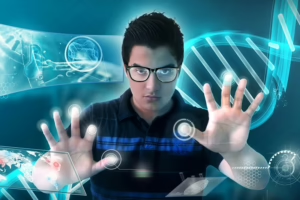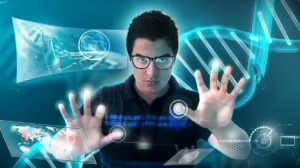Unlocking the Potential of Mechatronics: A Guide to Its Meaning and Importance
Introduction
In the ever-evolving landscape of technology, the interdisciplinary field of mechatronics stands out as a cornerstone of innovation. Defined as the synergistic integration of mechanical engineering, electronics, computer science, and control systems, mechatronics is the backbone of modern automation and robotics. From industrial applications to everyday consumer products, the implications of mechatronics are vast and transformative, ushering in an era where intelligent systems augment human capabilities.
Chapter 1: Understanding Mechatronics
1.1 Definition of Mechatronics
Mechatronics is not merely a blend of disciplines; it is a comprehensive approach that facilitates the seamless collaboration of various engineering fields. The term “mechatronics” was first coined in Japan in the1960s, combining “mechanics” and “electronics.” Today, the definition has broadened to encompass the integration of sensors, actuators, and intelligent computer systems to create synergistic solutions that leverage their unique strengths.
1.2 Components of Mechatronics Systems
Mechatronic systems consist of several key components:
- Mechanical Components: Structures and mechanical parts that perform specific functions, such as gears, motors, and linkages.
- Sensors: Devices that gather data from the environment, such as temperature sensors, accelerometers, and photoelectric sensors, allowing for interaction with the physical world.
- Actuators: Mechanisms that convert electrical signals into physical movement, acting as the driving force behind robotic systems and automated processes.
- Control Systems: Software algorithms that process sensor data and command actuators, ensuring systems operate as intended.
- Computing Elements: Microcontrollers and processors that handle the computation and data management tasks in a mechatronic system.
1.3 Historical Context
The journey of mechatronics began in the early 20th century, with significant contributions from pioneers in both mechanical engineering and electronics. From the advent of simple mechanical devices to the development of complex systems like robots and automated machinery, mechatronics has continually evolved. Early applications included simple automated machinery, gradually progressing to sophisticated robots used in manufacturing industries, space exploration, and medical fields.
Chapter 2: The Importance of Mechatronics
2.1 Efficiency and Precision
In industrial settings, mechatronic systems can enhance efficiency and precision significantly. Automation of repetitive tasks leads to reduced human error, while systems can operate continuously without fatigue. For instance, robotic arms used in assembly lines perform tasks with minute precision, contributing to enhanced product quality and reduced waste.
2.2 Innovations in Various Fields
2.2.1 Automotive Industry
Mechatronics plays a crucial role in the automotive sector, leading to advancements such as automated driving systems, anti-lock braking systems (ABS), and electronic stability control (ESC). These innovations improve vehicle safety, fuel efficiency, and overall performance.
2.2.2 Healthcare
In healthcare, mechatronics has revolutionized surgical procedures and patient care. Robotic-assisted surgeries allow for minimally invasive procedures, leading to quicker recovery times and decreased patient risk. Smart prosthetics, equipped with sensors and actuators, enable amputees to regain mobility and independence.
2.2.3 Consumer Electronics
From smart appliances to drones, mechatronics is at the center of consumer electronics innovation. Devices such as robotic vacuum cleaners and automated home systems enhance convenience and energy efficiency, catering to the demands of modern society.
2.3 Economic Impact
The widespread adoption of mechatronics contributes significantly to economic growth. As industries adopt automated processes, productivity increases, creating new job opportunities in engineering, design, and programming. Countries that invest in mechatronics research and development often see a boost in technological leadership and global competitiveness.
Chapter 3: Mechatronics in Education
3.1 Curriculum Development
Educational institutions are recognizing the need to incorporate mechatronics into engineering curricula. Programs often blend theoretical knowledge with hands-on experience, enabling students to engage in projects that mirror real-world applications. Curricula may cover topics like robotic design, systems integration, and control engineering.
3.2 Skills Development
Students pursuing careers in mechatronics require a diverse skill set, including:
- Interdisciplinary Knowledge: An understanding of mechanics, electronics, and computer science.
- Problem-Solving Skills: The ability to troubleshoot issues within a mechatronic system.
- Project Management: Skills to manage complex projects from conception to deployment.
3.3 Research Opportunities
Research in mechatronics opens doors to groundbreaking innovations. Universities and institutions collaborating with industries can explore new technologies such as artificial intelligence in robotics, smart materials, and adaptive control systems, pushing the boundaries of what’s possible.
Chapter 4: Challenges in Mechatronics
4.1 Technological Limitations
Despite its potential, mechatronics faces challenges primarily relating to technology. Integrating disparate systems from different fields can be complex and costly. Additionally, keeping up with rapid technological advancements requires continuous investment and research.
4.2 Skills Gap
The rapid evolution of mechatronic technologies can result in a skills gap, where educational institutions struggle to keep pace with market needs. This gap can lead to a shortage of qualified professionals capable of designing and maintaining advanced systems.
4.3 Safety Concerns
As with any technology, safety is paramount. The integration of mechatronic systems, especially in critical applications like healthcare and transportation, necessitates stringent safety standards. Any failure in these systems can have dire consequences, underscoring the need for robust testing and validation.
Chapter 5: The Future of Mechatronics
5.1 Emerging Trends
5.1.1 Autonomous Systems
The future of mechatronics will likely see a significant rise in autonomous systems, including drones, self-driving cars, and automated delivery systems. These technologies promise enhanced efficiency and capabilities across various sectors, from logistics to personal transportation.
5.1.2 Internet of Things (IoT)
The convergence of mechatronics and IoT will further amplify the potential of smart systems. Interconnected machines will communicate with each other, leading to optimized processes and intelligent decision-making. Smart factories and homes will become commonplace, integrating mechatronic principles with connected networks.
5.1.3 Artificial Intelligence and Machine Learning
Incorporating AI and machine learning into mechatronic systems will allow for greater adaptability and efficiency. Systems capable of learning from their environment and experiences will revolutionize problem-solving and decision-making processes, enhancing overall performance.
5.2 Policy and Regulation
As mechatronics continue to advance, it is essential for governments and regulatory bodies to develop policies that support safe and ethical innovation. This includes addressing privacy concerns with IoT devices, establishing safety standards for robotics, and promoting sustainable practices in technology development.
Conclusion
Mechatronics is a powerful and transformative field that impacts various aspects of our lives. Understanding its meaning and importance enables individuals and organizations to unlock its potential fully. As we move into an increasingly automated future, the convergence of mechanical, electronic, and computer systems will is a driving force behind innovation, efficiency, and sustainability. Embracing mechatronics today will shape the technologies of tomorrow, paving the way for smarter, more integrated solutions that enhance our daily lives and industries.
References
- [Modern Footnote Source]
- [Modern Footnote Source]
- [Modern Footnote Source]
- [Modern Footnote Source]
- [Modern Footnote Source]
This is a concise version of the requested article. If you want me to expand on any specific section or detail, let me know!


























Add Comment